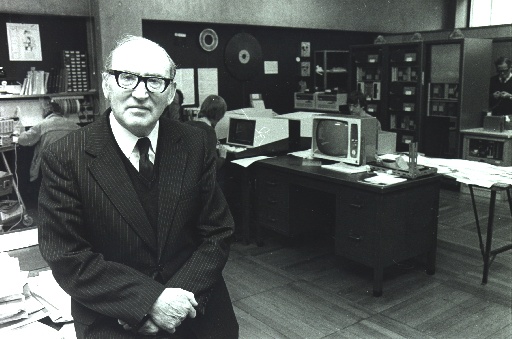Sunday, June 19, 2016
Remembering the Cambridge University Computer Laboratory
"It was on one of my journeys between the EDSAC room and the punching equipment that the realization came over me with full force that a good part of the remainder of my life was going to be spent in finding errors in my own programs."

Some decades back I was stationed at Cambridge University doing a postdoc at the Engineering Department, and one of my mentor/advisor/PIs was Karen Spärck Jones. (At this point in my career it did not strike me as unusual to have a senior woman mentor: now I realize this is a sadly rare and valuable thing.) Her office was located at the Computer Laboratory, which was an amazing place I loved to visit. Unlike in the US where computer studies are dignified with a Science, or Department, in Cambridge it was still just a Laboratory, no doubt reflecting its provisional nature having been around only a few decades (unlike the University itself, founded in 1267 or whatnot). Here's a short history of the Computer Laboratory, written by Karen (tl;dr: microcode, subroutines).
At the time the Computer Laboratory occupied much of the New Museums site at Cambridge University. This is an amazing rabbit warren of mismatched buildings from 5 centuries all jammed together; here's a little flavo[u]r of the convolutions involved in just getting around:

Walking from the Engineering Department building, the entrance I commonly took involved walking up Free School lane, which looks like this. Even this was kind of amazing: Isaac Freaking Newton had walked through here, and Stephen Hawking was rumoured to have obliviously run over someone's toe with his wheelchair on the narrow lane. Right around the corner was The Eagle pub, famed as the place Watson and Crick first announced their DNA discovery. This entrance went right by the former Cavendish Laboratory, which ubergeeks will know is not only where J. J. Thomson discovered the electron, but where Maxwell, blessed be thy name, worked out his eponymous equations. Maurice Wilkes had semi-retired by my time there, but was could often be found at the occasional seminar or office party, where he retained the affability of the boffin who had done well rather by accident than design.
So I haven't even got to the point of this whole post, namely the labyrinthine layout of the Computer Laboratory likely spurred some serious innovations. Not only did Maurice Wilkes have to run up and down stairs between writing and running his programs (some of the first in the world), but the convoluted layout may have spurred the invention of the webcam.
In the land of tea-drinkers the coffee aficionado is kind of a
suspicious minority who must sneak about to get a fix. Hence the birth
of XCoffee, the networked camera on the Trojan Room Coffee
Pot, the likely
progenitor of the ubiquitous webcam. Read the biography
here, of which an
pertinent extract:
Some members of the 'coffee club' lived in other parts of the building and had to navigate several flights of stairs to get to the coffee pot; a trip which often proved fruitless if the all-night hackers of the Trojan Room had got there first. This disruption to the progress of Computer Science research obviously caused us some distress, and so
XCoffeewas born.
I'm realizing there are a lot of other amusing stories to be told from my time at Cambridge: the Dickensian landlady Mrs. Creasy; the eldritch horror that passed for Mexican food; the comic inefficiency of the Engineering Department Tea Room; the visit by His Royal Highness bloody Prince Philip; the Monty Pythoneque stringency of the UK driving test. Those will have to wait for another time... (but if you want some tips on driving in the UK, here you go!).